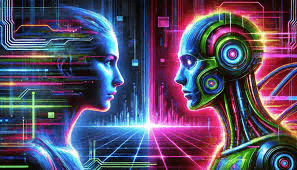The Future of AI: Beyond the Hype
While artificial intelligence has become a buzzword in today's tech landscape, its true impact lies not in sci-fi visions of conscious machines, but in practical applications transforming various industries. This article explores the current state of AI technology, highlighting how it excels at specific tasks like pattern recognition and data analysis while acknowledging its limitations. We examine real-world implementations across sectors from small businesses to healthcare, discuss pressing challenges including data privacy and algorithmic bias, and look ahead to a future where AI serves not as a replacement for human intelligence, but as a powerful tool to augment human capabilities and drive innovation in unexpected ways.

Michael Zhang
Michael Zhang is a cloud architecture specialist and digital transformation consultant with 15 years of experience in enterprise technology. As the former head of cloud strategy at a Fortune 500 company and current industry advisor, he helps organizations navigate their cloud journey. Michael holds AWS, Azure, and Google Cloud certifications and frequently contributes to leading technology publications.
The Current State of AI
When people hear "artificial intelligence," they often imagine human-like robots or super-intelligent computers. The reality is both more mundane and more fascinating. Today's AI excels at pattern recognition, data analysis, and specific tasks like language processing or image generation. It's powering everything from your email spam filter to sophisticated medical diagnosis tools.
However, these systems are fundamentally pattern-matching machines, not the conscious entities often portrayed in media. They're incredibly powerful tools, but tools nonetheless – each designed for specific purposes rather than general intelligence.
Real-World Impact
The most exciting developments in AI aren't happening in robotics labs or tech giants' headquarters (though important work continues there). They're occurring in unexpected places:
Small businesses are using AI to automate customer service and inventory management. Farmers are employing machine learning to optimize crop yields and reduce water usage. Medical researchers are accelerating drug discovery through AI-powered molecular analysis.
These practical applications might not make headlines, but they're quietly revolutionizing industries and improving lives.
The Challenges Ahead
Despite rapid progress, significant challenges remain. Data privacy concerns, algorithmic bias, and the environmental impact of training large models are pressing issues that demand attention. The AI community must address these challenges while pushing the boundaries of what's possible.
Moreover, as AI systems become more sophisticated, we face new questions about transparency and accountability. How do we ensure AI decisions are explainable? How do we maintain human oversight while leveraging AI's capabilities?
Looking Forward
The next decade will likely bring significant advances in AI capabilities, but perhaps not in the ways many expect. Instead of artificial general intelligence, we're more likely to see:
- More sophisticated and efficient specialized AI systems
- Better integration of AI tools into existing workflows
- Improved accessibility of AI technology for smaller organizations
- Enhanced focus on ethical AI development and deployment
Conclusion
The future of AI isn't about replacing human intelligence but augmenting it. By focusing on practical applications and responsible development, we can harness AI's potential while avoiding the pitfalls of unrealistic expectations.
The most exciting aspect of AI isn't what it can do by itself, but what humans can achieve with it as a tool. As we move forward, maintaining this perspective will be crucial for realizing AI's true potential.
Comment Section
Comments:
Be the frist to share your thougts